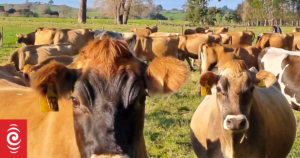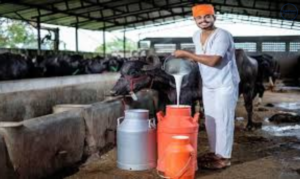
Maximize Market Research, a prominent Food and beverages research firm has released a comprehensive market intelligence report on the Global Dairy Protein Market. The report anticipates that the market will reach a total value of USD 17.49 billion by 2029, with a projected compound annual growth rate (CAGR) of 5.8 percent during the forecast period.
Market Overview:
The dairy protein market comprises products derived from farm animals, primarily milk. These products find their way into various dairy items such as yogurt, butter, ice cream, cheese, and more. The market offers different types of proteins, including isolates, concentrates, and caseinates, obtained through the filtration of regular milk.
Market Dynamics:
One of the major driving factors behind the growth of the global dairy protein market is the demand for infant formula, particularly for newborns and babies in the early weaning stages. The pursuit of a healthy diet rich in proteins has also contributed to market growth. Proteins are essential for the development of bones, skin, muscles, and various bodily functions.
However, the dairy protein industry faces a significant challenge related to its environmental impact. Methane gas emissions from dairy animals have raised concerns about climate change, leading to the implementation of regulatory policies in various countries.
Regional Insights:
In 2022, North America dominated the global dairy protein market, a trend expected to continue during the forecast period. The United States and Canada utilize automated milking equipment for commercial dairy farming, which has driven market growth. The Asia-Pacific region is projected to experience the highest CAGR, with India being a major contributor to global milk production. However, India’s export rate for dairy protein products is relatively low, whereas New Zealand, Germany, and the Netherlands are the leading exporters. The United States and China were the primary importers of casein protein in 2022, stimulating market growth.
Market Segmentation:
The dairy protein market is segmented based on Form, Type, and Application.
By Form:
- Solid
- Liquid
By Type:
- Whey protein
- Milk Protein Concentrate
- Casein and derivatives
The whey protein segment dominated the market in 2022, while Milk Protein Concentrate is expected to witness a CAGR of 5.5 percent during the forecast period. The solubility of whey protein and Milk Protein Concentrate in water compared to caseins may hinder the growth of the casein segment.
By Application:
- Food and Beverages
- Infant Nutrition
- Personal Care and Cosmetics
- Other
Food and Beverages held more than half of the global dairy protein market share in 2022 and are expected to grow at a CAGR of 8.3 percent during the forecast period. The use of dairy-based products in food and beverages has positively impacted market growth. Infant nutrition is also a significant segment in the dairy protein market, with consumers favoring milk-based texture modifiers and foaming agents over artificial ingredients in cosmetics.
Key Competitors:
Key players in the dairy protein market include Archer Daniels Midland Company, Arla Foods Amba, Kerry Group PLC, Saputo, Inc., Fonterra Co-operative Group Limited, Royal Frieslandcampina N.V., Schreiber Foods, Inc., Lactalis Group, DANA Dairy Group Ltd., Agri-Mark, Inc., Anchor, United Dairymen of Arizona, Grassland Dairy Product, PepsiCo, Eriefoods.com, Glanbia plc, Unternehmensgruppe Theo Müller, Tatura Milk Industries Ltd, Milk Specialties, and LAÏTA PGC.
Key Questions Answered:
- What is the expected CAGR for the Dairy Protein Market through 2029?
- What was the market size in 2022, and what is the projected size for 2029?
- What are the global trends and upcoming industry applications in the Dairy Protein Market?
- What recent industry trends can drive additional revenue streams?
- What growth strategies are market players considering?
- What challenges could the Dairy Protein Market face in the future?
- Who holds the largest market share in the Dairy Protein Market?
This comprehensive report offers valuable insights for stakeholders in the dairy protein industry, including dairy producers, food manufacturers, and investors, assisting them in making informed decisions and strategic investments in this evolving market.







